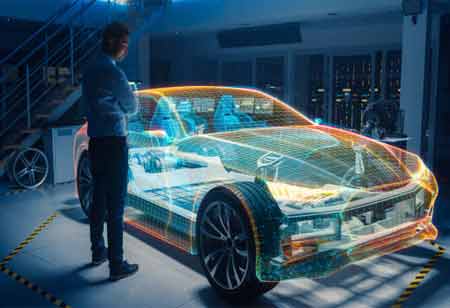Thank you for Subscribing to Auto Business Outlook Weekly Brief
Latest Trends in Automobile Engineering
The latest technologies promise to create more efficient and eco-friendly transportation solutions, transforming how people travel and interact with vehicles in the coming decades.

By
Auto Business Outlook | Thursday, May 29, 2025
Stay ahead of the industry with exclusive feature stories on the top companies, expert insights and the latest news delivered straight to your inbox. Subscribe today.

Fremont, CA: Advancements have transformed vehicle design, performance, and functionality, enhancing efficiency, safety, and sustainability. Key innovations include electric vehicles (EVs), autonomous driving, connected car technologies, and fuel efficiency and safety improvements. Breakthroughs in battery technology, especially lithium-ion and solid-state batteries, have boosted energy density, reduced charging times, and extended EV range. EVs are becoming more practical and accessible, with leading automakers driving the production of high-performance electric cars.
Expanding charging infrastructure and innovations in fast-charging networks have addressed one of the key challenges facing EV adoption. The automotive industry is making strides toward fully autonomous vehicles, which use advanced sensors, machine learning, and AI to navigate without human intervention. Companies like Waymo, Tesla, and Uber have significantly progressed in developing self-driving cars. The sensors feed data into sophisticated AI algorithms, enabling the vehicle to make real-time navigation, speed, and obstacle avoidance decisions.
Connected car technologies, or the integration of vehicles with the Internet of Things (IoT), are also revolutionizing the automotive industry. Vehicles are increasingly equipped with onboard sensors, GPS systems, and cellular connectivity to enable communication with other vehicles, infrastructure, and cloud-based services. The connectivity allows for features like real-time traffic updates, remote diagnostics, and over-the-air software updates. V2X (vehicle-to-everything) communication is paving the way for safer and more efficient transportation systems.
Advancements in vehicle safety systems have become a top priority. The integration of advanced driver-assistance systems (ADAS) has significantly reduced accidents and fatalities on the road. AI and ML enhance these systems by enabling them to learn and adapt to different driving conditions, improving their accuracy and effectiveness. Another area of innovation in safety is the use of augmented reality (AR) in head-up displays, which projects essential driving information directly onto the windshield, helping drivers stay focused on the road.
Improving fuel efficiency and reducing emissions remain central goals in automobile engineering. While EVs are a key part of the solution, internal combustion engine (ICE) vehicles are also seeing improvements in fuel efficiency through innovations in engine design, hybrid technology, and alternative fuels. Manufacturers are exploring using recycled materials and bio-based plastics to minimize the environmental impact of vehicle production. 3D printing manufactures complex vehicle parts, reducing waste and allowing for more customizable and efficient production processes.
Recent developments in automobile engineering are shaping a future where vehicles are brighter, cleaner, and safer. Electric propulsion, autonomous driving, connected technologies, enhanced safety features, and sustainable materials contribute to the automotive industry's evolution.






